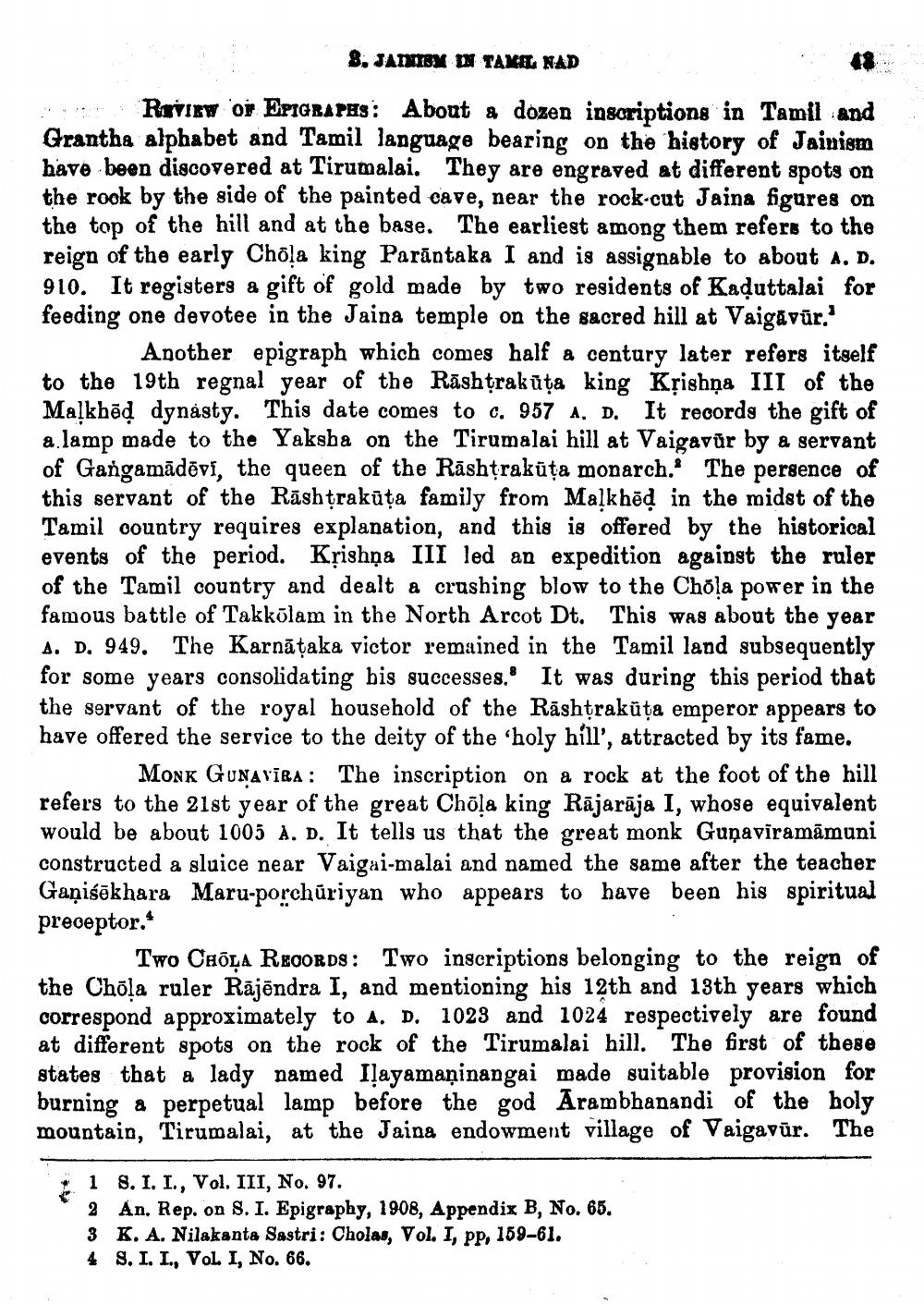________________
8. JAINISM IN TAMIL NAD
48
REVIEW OF EPIGRAPHS: About a dozen inscriptions in Tamil and Grantha alphabet and Tamil language bearing on the history of Jainism have been discovered at Tirumalai. They are engraved at different spots on the rook by the side of the painted cave, near the rock-cut Jaina figures on the top of the hill and at the base. The earliest among them refers to the reign of the early Chōla king Parantaka I and is assignable to about A. D. 910. It registers a gift of gold made by two residents of Kaḍuttalai for feeding one devotee in the Jaina temple on the sacred hill at Vaigāvür.'
Another epigraph which comes half a century later refers itself to the 19th regnal year of the Rashtrakuta king Krishna III of the Malkhed dynasty. This date comes to c. 957 A. D. It records the gift of a lamp made to the Yaksha on the Tirumalai hill at Vaigavur by a servant of Gangamadevi, the queen of the Rashtrakuṭa monarch. The persence of this servant of the Rashtrakuta family from Malkhed in the midst of the Tamil country requires explanation, and this is offered by the historical events of the period. Krishna III led an expedition against the ruler of the Tamil country and dealt a crushing blow to the Chola power in the famous battle of Takkolam in the North Arcot Dt. This was about the year A. D. 949. The Karnataka victor remained in the Tamil land subsequently for some years consolidating his successes." It was during this period that the servant of the royal household of the Rashtrakuta emperor appears to have offered the service to the deity of the 'holy hill', attracted by its fame. MONK GUNAVIRA: The inscription on a rock at the foot of the hill refers to the 21st year of the great Chōla king Rājarāja I, whose equivalent would be about 1005 A. D. It tells us that the great monk Guņavīramāmuni constructed a sluice near Vaigai-malai and named the same after the teacher Gaṇisekhara Maru-porchūriyan who appears to have been his spiritual preceptor.*
TWO CHOLA RECORDS: Two inscriptions belonging to the reign of the Chōla ruler Rājëndra I, and mentioning his 12th and 13th years which correspond approximately to A. D. 1023 and 1024 respectively are found at different spots on the rock of the Tirumalai hill. The first of these states that a lady named Ilayamaninangai made suitable provision for burning a perpetual lamp before the god Arambhanandi of the holy mountain, Tirumalai, at the Jaina endowment village of Vaigavur. The
1 8. I. I., Vol. III, No. 97.
2 An. Rep. on S. I. Epigraphy, 1908, Appendix B, No. 65.
3 K. A. Nilakanta Sastri: Cholas, Vol. I, pp, 159-61.
4 S. I. I., Vol. I, No. 66.




